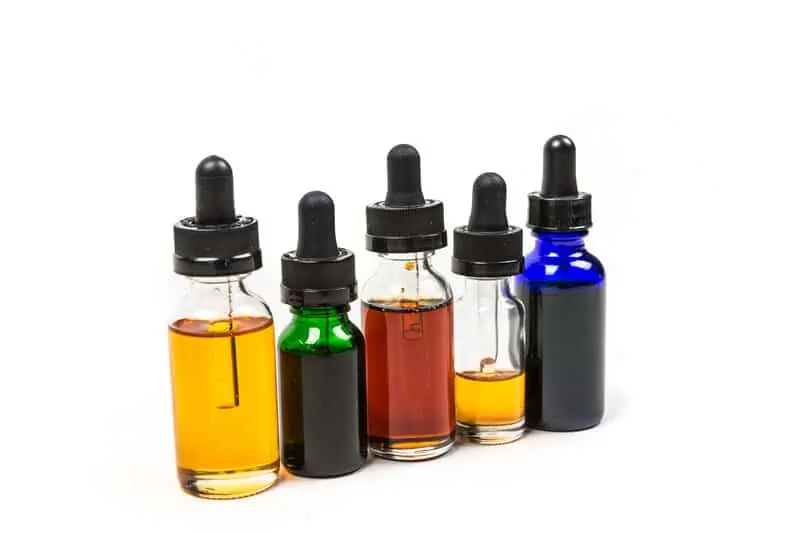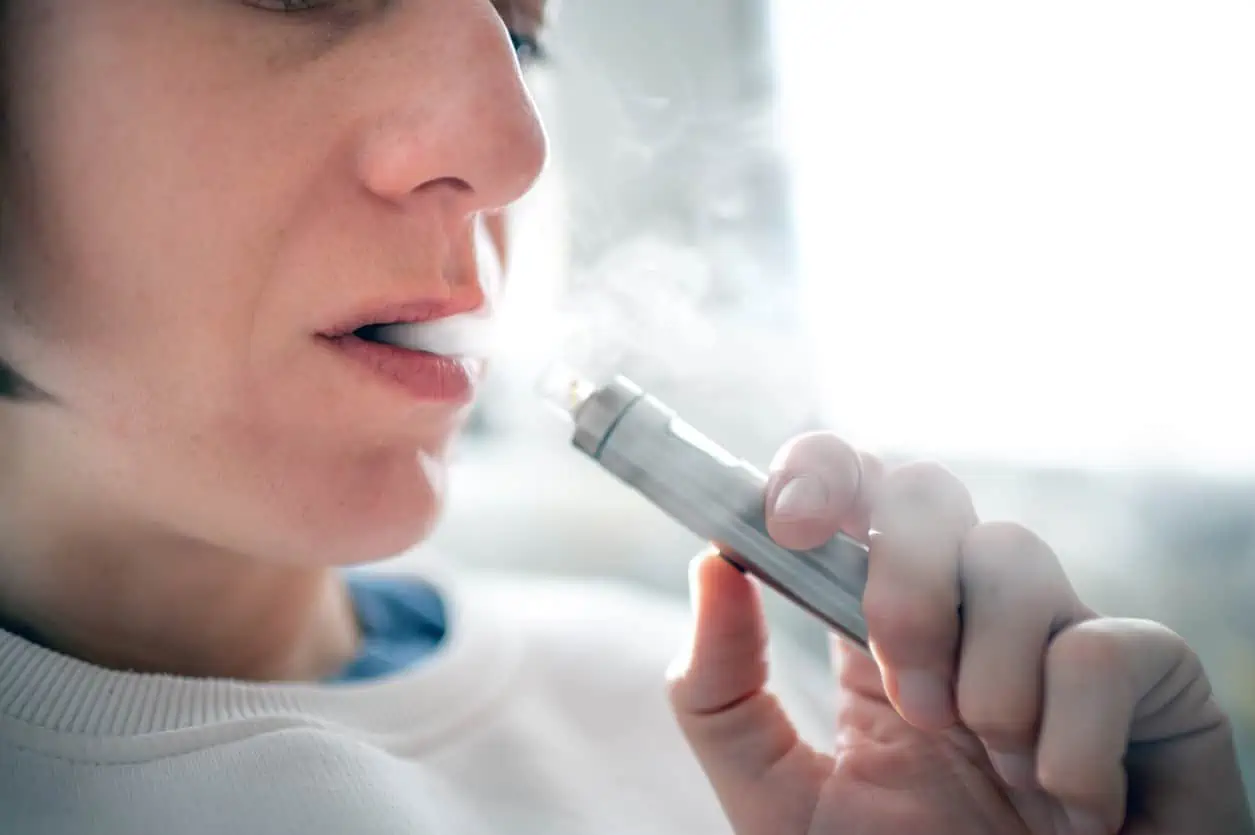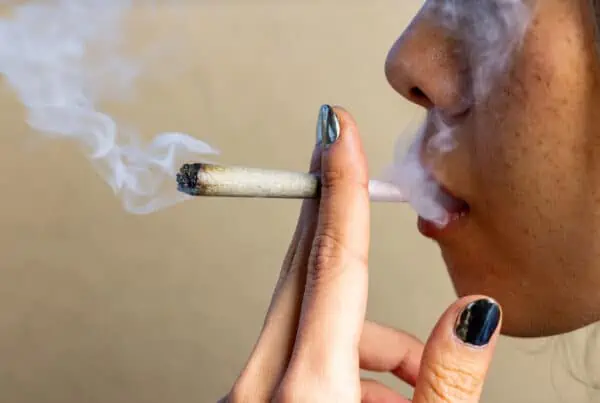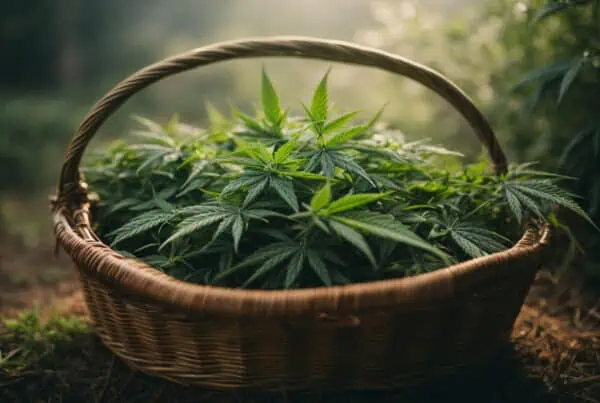TABLE OF CONTENTS
CBD products can provide a wide range of health benefits without the high associated with THC products. Vaping CBD or THC can provide fast-acting and long-lasting effects.
If you are new to smoking or vaping, our guide can teach you how to vape CBD oil or THC safely and effectively.
Steps To Use a Vape Pen
It is important to read the handbook in order to avoid any issues. Utilize the charger that was provided in order to charge the pen. Start the pen up by operating it without any juice in the beginning.
Fill the tank with e-liquid, making sure to avoid the hole in the middle, and then wait for it to soak into the coil for five minutes. To begin, press the button five times in quick succession, and then take a breath in via the mouthpiece.
Vape Pen Advantages-How To Use a Vape Pen
The ease of use, low maintenance requirements, portability, and accessibility of vape pens are just a few of the devices' many selling points. They eliminate the need for intricate settings while providing a vaping experience that is both straightforward and pleasurable.
Popular Vape Pen Products
There is a wide range of costs for several popular vape pen products. Some instances are as follows:
Uwell CALIBURN Explorer 32W Pod System is available for purchase for $27.99.
dotmod Switch R 25W Pod System may be purchased for $13.99.
The Vaporesso LUXE Q2 SE Pod System can be purchased for $15.99.
Uwell Caliburn G3 25W Pod System is currently available for $21.99.
Aspire Minican 3 Pod System is available for $12.99.
Now that you know how to use a vape pen check out some of the affordable vape pens above.
How To Care For a Vape Pen
To properly maintain your vape pen, it is important to clean the mouthpiece, battery, and tank on a regular basis. To further extend the life of the gadget, make sure to replace the coils whenever the manufacturer suggests doing so and to carefully store it whenever it is not in use.
A good vaping experience is one of the potential outcomes and consequences of using a vape pen, however the specific outcomes might vary widely depending on the kind of e-liquid that is consumed.
Vape Pen Effects
The effects of using a vape pen include the inhalation of vaporized e-liquid, which can contain nicotine, flavorings, and other substances. The results vary from relaxation and pleasure to nicotine satisfaction, depending on the contents of the vape juice and the presence of nicotine.
As for maintenance, aside from regular cleaning and coil replacement, ensure the battery contacts are clean, avoid overcharging, and replace the battery if you notice a decrease in performance. Always follow the manufacturer's instructions for the best experience and longevity of your device.
Vape pens are the portable option for smoking weed. That is not the only benefit, but it is the primary benefit. You can easily slide it into a pocket, backpack or purse. You don't have to fumble for a lighter or try to find a lost lighter as you would if you were smoking a joint.
All you have to do is just to take out your vape pen, stuff it with weed or oil and hit the start button and then begin inhaling the odorless vapor, which is dispelled without clinging to the clothes you have on. Let's now talk about the versatility of vape pens.
Top Benefits of Vape Pens
The Versatility
You can expect to find vape pens as being versatile with the ability of being transported anywhere. If you are indoors or even outdoors, you don't have to be scared about upsetting anyone due to the smoke. You don't have to be concerned about the odor of weed lingering in your vehicle.
You don't have to be concerned about doing the same to a restroom, if you want to use one of your vape pens while on a break. When you have finished smoking, all you do next is to put the vape pen in its place and just go about your business for the day.
The Longevity
When you use vape pens, you can expect that the first hit will be similar in strength as the last hit. No one wants to open up a jar of packaged flower and let the air get in so as to dry out the flower and then not have the best hit from it. In that case, the weed would lose its potency and taste.
However, in the case of the vape pen, this would never happen. If you use concentrates, you can expect to have more longevity than the cannabis flower. Concentrates maintain their potency.
The Traditional Way
With your vape pens, you don't have to worry about buying too much weed to get a good smoke. Additionally, when you smoke weed the traditional way, you lose some of the buds by crumbling or carbonization.
Moreover, weed in a bowl or joint may not burn as evenly as with the vape pens. And if you use a grinder, then you have to pick put stems and seeds. The puff is what you are vaporizing with your vape pens and then rest of weed remains in its cartridge.
The Consistency
Over time, the potency and the impact on the marijuana flower will diminish. In addition, there are some variations, which are normal within the same cannabis strain from one harvest to the next.
Each marijuana grower strives for consistency, but this is almost impossible because of how complex the terpene and cannabinoid production is in the marijuana plant. It is easier to replicate concentrates from one batch to the next.
Of course, this will have a slight variation because of the flower that is used. However, concentrates tend to have a higher level of terpenes and cannabinoids and so those differences will go unnoticed.
If you have not tried one of these yet, it won't hurt to give it a shot. However, you might have some questions as to its benefits and how to use it and also any drawbacks that it might have.
So, we have addressed those concerns for you and put together some of the advantages and disadvantages of cannabis vape pen cartridges. We will address the advantages first. Let's begin with the convenience.
The Convenience
For convenience, vape pen cartridges are the best, especially for those who want to switch from smoking joints. This device is portable and easy to fit into someone's pocket. So, it is not noticeable and no one will know you have it on you.
Attach it to a battery and begin inhaling it to produce the vapor. Some of the vape pen cartridges have a ‘push button' feature, but it all depends on the kind of battery that you choose to use.
Fewer Aromas
When you smoke weed, you have to be prepared that the smell will get you noticed. This is highly noticeable when you are smoking joints. However, if you opt for vape pen cartridges, you won't have to worry about the odor because it is not as strong as when the actual marijuana flower is burning.
Moreover, the vapor from the pen goes away much quicker and you won't smell it on your clothes or hand.
Longer Lasting Shelf Life
If vape pen cartridges are sold in a dispensary, the owner does not have to worry about it not having a long shelf life. In fact, its shelf life is longer than many cannabis products such as the cannabis flower, which loses its taste and odor over a period of time.
In many cases, it depends on how the flower is dried and cured by the grower. In comparison to the vape pen cartridges, the taste and odor are not lost, no matter how long they are on the shelf.
Consistent Hits
When the smoker takes a hit, the quality of each hit could be different while smoking cannabis flower. The first hit is the best and then each hit afterward is diminished in its quality and strength. The opposite is true with the vape pen cartridges where the hits are consistent in its quality. Now let us look at some of the disadvantages as we promised.
Rate of Defect
Because the vape pen cartridges are so fragile, the rate of defect might be high in many cases. There are two instances where you might see a defect.
It could be in the beginning where the device just doesn't work for whatever reason and it could be due to an issue with the electrical conduction. Another way is if it is blocked after being used for a while.
Battery Charging
When you use the device, it has to be charged from time to time because the battery might run down with constant use. For some consumers, this is no big deal while others might not want to be caught with a dead battery while on the go.
The Variety
You can opt for a vape cartridge, which you will find at a marijuana dispensary. These cartridges already have specific marijuana strains stored in them. Many of them are color coded so you know which ones to buy, whether sativa, indica or hybrid.
Some companies that produce concentrate will also provide CBD cartridges to the consumer, especially those who want to find fast treatment for an injury or pain relief.
The Cost
The cost of vape pens is also important to reaping the benefits. This is a small investment to get the benefits that it provides. You will usually pay less than fifty dollars for any good vape pen. Most of them have the same cartridge size. You can buy replacement cartridges for $20 or less.
What Is CBD Vape Juice?

CBD vape juice combines CBD oil and a carrier liquid for easier heating in the vape pen. The CBD e-liquid flavor varies depending on the product type, extraction process, or your desired flavoring if you plan to make your own CBD vape juice at home. Learn how to make your own CBD oil.
.Compared to other consumption methods like a topical application or oral administration, vaping CBD e-liquid enables the cannabinoid and other essential oils to reach the alveoli in the lungs, which are a direct route into the body's bloodstream.
In just a matter of minutes, users will feel the effects coming on quickly. When orally consumed, cannabinoids must go through the digestive system, taking between an hour or two to take effect. In addition, vaping CBD can offer a higher bioavailability than other methods.
CBD vape oil can be discreetly consumed in a vaporizer and produce smaller plumes of vapor (depending on the vaporization device) compared to smoking cannabis flowers. In addition, the vapor has a more subtle aroma compared to cannabis smoke.
How to Vape CBD Oil
If you are new to inhaling CBD vape liquids, here is how it is done.
Start Low, Go Slow
Before you start vaping CBD vape liquid, determine your ideal dosage. While vaping CBD oils is not known to produce severe adverse effects, we recommend starting with the lowest dose possible.
If you are new to vaping, start with 5 mg or 10 mg of CBD and wait 15 minutes to half an hour to determine how your mind and body react. If you feel like you need a higher dose, you can take it right after or wait several hours before increasing the dose of CBD e-juice.
How much CBD should you vape? Some CBD vape oil products offer metered doses, while others provide a total cannabinoid content on the packaging with an estimated number of draws (3-second pull). Divide the estimated draws by the total cannabinoid content to determine the dose of each puff. Keep in mind longer draws mean a higher intake of CBD.
The following factors can affect how much CBD you need:
- CBD oil ingredients
- CBD concentration
- Chemical profile of CBD vape oil (other cannabinoids and terpenes)
- Your metabolism
- Your height and weight
- Your medical condition and severity of symptoms
In general, CBD can be tolerated in high doses, although there may be some adverse side effects, including:
- Drowsiness
- Nausea and vomiting
- Diarrhea
- Interactions with medications
Finding the correct dose, in the beginning, can take some guesswork. That's why we recommend starting with the lowest dose possible to avoid adverse effects. From there, you'll have to do a bit of experimenting to find the correct CBD dosage depending on your desired effects. Consult with a doctor before you consume CBD.
Source the Right CBD Vape Oil
In the wide world of CBD, it can get confusing to choose the right product to consume. It can be easy to mistake traditional CBD oil and CBD vape oil. CBD vape oil is for use only with vaporizers or dab pens.
CBD oil is generally mixed with food and drinks or applied sublingually (under the tongue) for faster absorption. CBD oil, on its own, should not be vaporized and inhaled.
CBD vape oil is the only CBD product type that can be vaporized. CBD vape oil contains a carrier oil that gives it the right consistency for vaping.
Use a High-Quality Vaporizer-How to Vape CBD Oil
A high-quality vaping device is essential to have a great vaping experience.
Here are your main vaporizer options:
Disposable CBD Vapes
Disposable vape pens are an affordable and convenient option for first-time users or those on the go. Disposable pens feature a vape battery, heating element, and a pre-filled CBD oil cartridge all in one. Once you've finished vaping your CBD vape oil, you can toss the disposable CBD pen and buy another one.
CBD Oil Vape Cartridges
CBD cartridges are screwed into a 510 thread battery. Usually, they can hold about 1 ml of CBD. When you are done vaping the entire product, you simply replace the CBD oil cartridge with a new one.
Refillable CBD Vape Pens
Refillable vape pens can be slightly more expensive than other options but can offer more functionality and longevity over time. Refillable vape pens usually have a battery, heating coil (will need replacement), a refillable tank, and a mouthpiece. To use your CBD vape pen, fill the device with your favorite CBD vape oil, heat, and inhale.
CBD Pods
CBD pods are proprietary cartridges that work with specific batteries. They are similar to pre-filled vape tanks in that you can replace them when you are done.
Take Short and Slow Draws
When vaping CBD vape oil, we recommend taking short and slow draws for the best experience. A 3-second pull is all you need to start and then slowly exhale. You don't need to keep the vapor inside your lungs for long since it immediately enters the bloodstream.
After taking your first draw, wait about 10 minutes to determine how it affects your mind and body and if you need a second pull. How often you vape CBD depends on your desired experience and the severity of your medical condition.
Vaping CBD FAQs
Is It Safe to Vape CBD Oil?
While vaping CBD oil is generally considered safe, there may be a low amount of risk. One of the main drawbacks of vaping CBD can be its adverse side effects for users who consume too much. However, these side effects are mild and go away quickly.
In addition, some manufacturers may produce CBD vape oils that are not tested for contaminants or purity. We recommend buying CBD vape oil from manufacturers that can provide a certificate of analysis (COA).
Does Vaping CBD Oil Get You High?
If you vape CBD oil, you will not experience any intoxicating effects. Hemp-derived CBD oil must contain under 0.3% THC, a negligible amount that won't cause intoxication. Stay away from untested CBD products to avoid undetected THC.
Common CBD Vaping Mistakes
How do you effectively vape CBD oil?
Here are a few mistakes to avoid when vaping CBD.
Not Checking the CBD Concentration
Consider the concentration of CBD and the volume of CBD vape juice. For example, a higher volume bottle of CBD vape juice than a lower volume bottle with the same concentration of CBD will affect you differently. The same amount of CBD will be diluted in the higher volume bottle than a lower volume bottle with the same amount of CBD.
Confusing Hemp Oil with CBD Vape Oil
CBD oil and hemp oil are different products. Hemp oil, also known as hemp seed oil, is made of the hemp plant's seed and does not contain a high concentration of CBD compared to the high concentration of CBD in a vape oil.
Vaping Pure CBD
CBD oil, or tinctures, should not be vaped alone. Due to CBD oil's consistency and chemical profile, it is not designed to be vaporized or inhaled. CBD e-juice, however, contains the right carrier oil, which allows it to be heated by a vaporizer and inhaled.
Avoid CBD with Nicotine
CBD and nicotine can lead to a shorter shelf-life for your product. CBD with nicotine may not produce the same effect as inhaling CBD vape juice alone.
Dry Herb Vaporizers
There are cannabis vaporizers specifically for dry herb. These are ideal for recreational marijuana enthusiasts who move from place to lace and need something portable. These have the same functionality as the table top vaporizer and can also be used with concentrates.
They are battery operated and compact in design, easy to store, but more fragile. So, be extra careful when taking it along with you in a pocket or purse.
The features are limited in comparison to the table top vaporizer. The newer ones do have temperature control features, but the older ones may not.
The Challenges of Vaping Culture and Industry
Despite the popularity and diversity of vaping culture and industry, they also face various challenges from different sources.
Health Risks
The long-term health effects of vaping are still unknown, as there is not enough scientific evidence or consensus on the safety or harm of vaping compared to smoking or other forms of delivery.
Some studies have suggested that vaping may have some benefits for smokers who want to quit or reduce their consumption, but others have raised concerns about the potential risks of exposure to nicotine, chemicals, metals and contaminants in e-cigarettes and their impact on the respiratory, cardiovascular, neurological and reproductive systems.
There have been reports of acute lung injuries, illnesses and deaths linked to vaping, especially among young people who used black market or adulterated products containing THC or vitamin E acetate.
Regulation
The legal status and regulation of vapes vary widely across countries and regions, depending on how they are classified and perceived by authorities and public health agencies.
Some countries have banned or restricted the sale, use or advertising of vapes, citing health concerns, youth appeal or tobacco control policies.
The regulation of vaporizers may affect the availability, quality, price and variety of vaping products and practices, as well as the rights and responsibilities of vapers, manufacturers, retailers and regulators.
Social Stigma
The social acceptance and perception of vaping are also influenced by various factors, such as cultural norms, media representations, personal experiences and moral judgments.
Some people may view vaping as a positive, fun or fashionable activity, while others may view it as a negative, addictive or harmful behavior.
Some people may support vaping as a personal choice, a hobby or a harm reduction strategy, while others may oppose it as a public nuisance, a gateway drug or a tobacco industry tactic.
The social stigma associated with vaping may affect the self-image, identity formation, social interaction and community involvement of vapers.
The vaping culture has evolved rapidly in the past decade, as more people have adopted vaping as a practice that involves not only inhaling and exhaling aerosol produced by an electronic device, but also expressing their personality, interests and values.
Vaping culture has also created various opportunities for innovation, diversity and community among vapers, as well as challenges for health, regulation and social acceptance among non-vapers.
As vaping continues to grow in popularity and complexity, it is important to understand its history and evolution, as well as its current landscape and future prospects.
How to Clean Your Vaporizer
Regular cleaning is one of the best ways to get the best experience from your cannabis vaporizer. When your device is clean, you don’t get the smell and flavor of burnt cannabis. Just pure, clean vapor.
This vaporizer maintenance guide shows you what you need to keep your device clean, how often to clean it, and step-by-step instructions on routine maintenance and deep cleaning.
Importance of Vaporizer Cleaning
No matter the cannabis smoking or vaporizing tool, a thorough cleaning ensures you can taste and feel the plant’s cannabinoids and terpenes. Cleaning everything, from the heating chamber to the mouthpiece, improves your device’s performance and longevity.
Here are a few reasons why the vaporizing cleaning process is so important:
Improved Taste
For better flavor and aroma, use a clean vaporizer. With a clean device, you don’t taste the harsh and bitter flavor of resin from the previous sessions. You also get a better vapor quality.
Better Performance
Without the resin, your cannabis oil or dry herb vaporizer can better heat the material evenly. A clean vaporizer reduces the likelihood of a clogged airway or burning resin in the heating chamber.
Longevity
Taking care of your device ensures you don’t need to replace parts as often, and your device lasts you for years to come.
“
There are over 300,000 jobs in the cannabis industry. CTU trained me for one of them!

Makes $24.50 @ THC +
Healthy
Smoking resin introduces more carbon byproducts, such as tar and ash, into your lungs than necessary. A clean vaporizer lets you consume fresh herb or oil, not its burned byproduct. Smoking resin can cause headaches, sore throat, and trouble breathing.
Saves Money
A longer-lasting device means less money spent on new ones and replacement parts. This is especially important since many vaporizers cost hundreds of dollars, so replacement is expensive.
Saves Time
Regularly cleaning your vape actually saves time in the long run because your device doesn’t get to the point where you need to remove the stuck-on bud, which can take hours to remove.
How Often Should I Clean a Vaporizer?
The more often you clean your device, the better. Ideally, you’d brush or wipe off the leftover material after every session, but that may not always be possible. Do your best to clean as much of the herb or oil from the heating chamber with every use.
How often you give it a deeper clean depends on how much you use your device and whether you clean it afterward with every use. Your vaporizer may need a deep clean if its performance is negatively affected.
What You Need
A complete vaporizer cleaning kit includes the following:
- 99% isopropyl alcohol
- Cotton swabs
- Cotton balls
- Small cleaning brush or old toothbrush
- Pipe cleaners
- Resealable plastic bags or container
- Alcohol wipes (optional)
Best Way to Clean Your Cannabis Vaporizer: Routine Maintenance
After every session, we recommend cleaning your device. A quick brush or wipe can dislodge a lot of the leftover debris from the bud or oil.
Most components, such as the mouthpiece, screen, and oil or herb chamber, may be cleaned with a moist paper towel or a cotton swab or ball with isopropyl alcohol.
So, Are Vape Pens Safe For Marijuana Use?
The safest vape pen in the world using high-quality cannabis extracts could be one of the safer ways to consume marijuana.
However, the industry has no regulations and cheap products flood the market. If you can find a well-made vape pen and oil that labels all ingredients found in the oil itself that meets safety standards, vaping marijuana with vape pens can be safe.
But, are vape pens safe if they aren't held to those standards? It's hard to tell and might not be worth the risk to your health! You can learn more about cannabis extracts and consumption here at Cannabis Training University, the leading weed school.
How do you properly use a vape pen for weed?
To activate the majority of vape pens, swiftly press the activation button five times. The light on the device will most likely blink in response. If your vape pen is draw-activated, all you have to do to vape is draw, and if it's button-activated, you have to hold down the button while you vape.
Why is my vape pen not working?
There are several causes for a vaporizer to abruptly stop functioning. Verify that your cartridge is not too tight and that the battery's contact and charging ports are both clean. It's conceivable that your cartridge is clogged if it still doesn't operate after giving it a thorough cleaning.
What do vape colors mean?
The voltage ranges corresponding to the various colors vary slightly across versions. All product lines, however, use the same notation for the levels: blue indicates the lowest setting, green indicates the midpoint, and red indicates the pen's hottest voltage.
How many times do you hit a vape pen?
An average person inhales roughly 1 mg of e-liquid every second or 3–5 mg of vapor per puff. For stronger hits, some folks might like taking longer, less frequent draws from their vape pen. A 500 mg vape cartridge should last you between 130 and 140 puffs, depending on the size of the cartridge.
Why is my vape pen blinking?
There are several reasons why your vape pen can be blinking. Most likely, there is a small problem, such as low e-liquid levels, filthy parts, a loose connection, poor battery life, or excessive device use. However, it's also possible that the coil inside your vaporizer is broken or that it is overheated.

Fred Hernandez
Fred Hernandez is a highly accomplished and versatile writer, boasting an extensive background in the cannabis industry. With an in-depth understanding of various sectors including cultivators, processors, retailers, and brands, Fred's expertise spans across the entire cannabis landscape. As a prominent contributor to CTU, he consistently delivers insightful articles exploring the latest developments, news, and regulations shaping the cannabis industry. Whether it's delving into the intricacies of cannabis products, cannabis strain reviews, or providing comprehensive analyses of cannabis laws, or sharing expert insights on cannabis cultivation techniques, Fred's wealth of knowledge positions him as an invaluable writer and educator for all cannabis-related subjects.












 Jeff was involved in an accident where he endured a traumatic brain injury. He had a week-long stay in ICU where brain surgeons
Jeff was involved in an accident where he endured a traumatic brain injury. He had a week-long stay in ICU where brain surgeons  100% risk free money back guarantee within 48 hours after purchase if student has not completed any of the courses or exams.
100% risk free money back guarantee within 48 hours after purchase if student has not completed any of the courses or exams.